Aged Gouda (minimum 12 months)
I'm actually starting off with a Dutch cheese. The only non French cheese on this particular account of cheeses . Aged Gouda (properly aged) is up there with the finest of hard cheeses. It has crystals like the finest of Parmigioano Reggiano. But, in my opinion the finest of aged Gouda has a depth of flavour that is second to none. The depth of caramel, salty sweetness is addictive. It is simply devine and probably one of the most underrated cheeses of the world. High in umami and our cat's favourite cheese! (Lucky Nudge, but just a tiny portion for that wee guy).
Aged Mimolette (minimum 12 months)
OK back to France. This cheese was produced in Lille (in the very north of France, almost on the Belgium border. These wee holes are a product of little mites ( wee insects) . 40 kilos of raw cows milk results in 3kgs of semi aged mimolette. There is a story that the early production of this cheese was commissioned by King Louis XIV. He liked aged gouda so much from Holland, he wanted to replicate it in France, hence the arrival of Mimolette. The young version is very similar to a young gouda. What King Louis XIV wanted to produce was an aged version of his Dutch neighbours' (ie gouda), in order to indulge in his favourite cheese. It is utterly delicious with crystals. It is full of sweet buttery salty distinct flavours, basically eating everything you want to have in your mouth at the same time. It is sublime.
Cantal Entré Deux AOP
Another raw milk cheese. This one is aged between 4-7 months. I've not tried Cantal jeune or Cantal vieux but entré deux is firm with a hint hazelnut and butter. It is made in the Auvergne region and has a history of over 2000 years. As with all these cheeses (other than gouda which has a wax rind) the rind is edible and it's a personal preference whether to eat it or not. Personally I think it's a crying shame not to eat the rind. Cheese makers go to extraordinary lengths to create these beautiful rinds and in my opinion it's part of the joy of cheese.
Roquefort AOP
The most famous blue cheese in France. Roquefort is made from raw sheep's milk. It has a rich creamy salty flavour and is distinctive by its almost open texture.
St Agur
This is my favourite French blue cheese. Actually my favourite of all blue cheeses. It is slightly more subtle than Roquefort, slightly sweeter with a nutty salty flavour. The cheese is slightly less open than Roquefort but St Agur is made with pasteurised sheeps milk. It has a high butterfat content, giving it a creamy mouthfeel. Really delicious.
Petit Billy
This is a fresh goats milk cheese and for people who have an anti to goats milk cheeses Petit Billy might well change your mind. It has a beautiful subtle flavour with a gorgeous amount of fresh acidity. It is highly versatile served sweet or savoury with an almost mousse like texture.
Ossau Iraty AOP
Sheeps milk cheeses are a revelation to me. The sheeps milk cheeses I'd tried before coming to France tasted quite "sheepy", not in a good way. Ossau Iraty is probably the most famous of Pyrenees sheeps milk cheeses. Made with raw milk in the Basque mountains it has a firm texture and a fruity nutty taste. It is absolutely delicious.
Etorki
Etorki means origin in the Basque language. This is a pasteurised sheep's milk cheese with an orange rind and a smooth interior. It has a subtle flavour and is lovely cooked (or not).
P'tit Basque
Another sheep's milk cheese from the Basque region of France. It has a basket weave rind and is semi firm in texture. It has a subtle flavour. It's a nice cheese but for me I'd choose Ossau Iraty over P'tit Basque but Ossau Iraty is more difficult to lay your hands on.
Chabichou de Poitou AOP
This is a stunning goats cheese. It is made in the southern region of Haute Poitou and was granted AOC status in 1990. I've never fully appreciated goats cheese until coming to France. I always liked a salade de chèvre chaud for lunch on holidays here but outside of that I just had the impression that it was very strong. Well it's not. The goat is there but not hugely pronounced and there is a beautiful acidity and sweetness to these cheeses. Chabichou de Poitou though is one out of the box. If it's aged to the correct point it becomes 3 cheeses in one. The rind has a gorgeous texture and flavour, inside the rind there's a layer of goo so melty that you need a spoon to eat it then inside the core is pure white and almost crumbly. It is amazing paired with melon Charentais, a squeeze of lemon, some good sourdough bread and a glass of Alsace wine. This is a perfect summertime lunch.
Rambol
This is a beautifully creamy walnut cheese that is essentially cream cheese mixed with a walnut blend. It is highly spreadable, making it perfect with some fresh sourdough and chopped dates. There is a gorgeous undertone of caramel and texture from the walnuts. Even for people who don't like walnuts, this cheese will win you over.
Epoisses
This is a stinker. I do believe every fridge sold in France should come with a proper airtight click clack. I have one and it's worth it's weight that's for sure because not only these wash rind cheeses (like Epoisses, Munster and Langes) but also camembert, brie and other soft cheeses have a very pungent aroma here. For me, Epoisses has a strong farmyard flavour that I'm not hugely keen on but I do love it baked or grilled. It comes from down the road in Burgundy. It's washed in a mixture of brine and Marc de Bourgogne, a local pomice brandy. This gives it its distinctive orange colour and almost sticky rind.
Cour de Neufchâtel AOP
Made in the Haute Normandie region of France, this is a raw cows milk cheese akin to camembert in flavour and texture. The history of its distinctive heart shape is a subject of discussion. Some thinking it represents the wings of angels, others thinking it was an offering given by young women from Neufchâtel en Bray to their gallant soldiers during the 100 year war.
Baguette Laonnaise
The name of this cheese comes from its shape. It is a washed rind cheese like Epoisses but has a far more subtle flavour. It comes from northern France and is made from cows milk. It's quite cute to look at as well!
Bleu d'Auvergne AOP
Unlike Roquefort and St Agur, this cheese from the Auvergne region of France is made with raw cows milk. It has a sweet salty flavour, full of umami, and like most blue cheeses, goes beautifully with slices of crisp apple or pear and pieces of walnut.
Beaufort AOP
A raw cows milk cheese from the Savoie region. Similar to Gruyere however with a firmer texture and an even sweeter nuttier flavour (in my opinion) this is a beautiful elegant cheese that has an all round appeal. It takes around 500 litres of milk to make a Beaufort of 40 kgs. The flavour can change depending on the seasons due to the different herbs and flowers eaten by the cows in the mountains of the Savoie.
St-Maure de Touraine AOP
This raw goats milk cheese is rolled in wood ash, it has a grey mouldy rind and is distinctive by having a straw through its centre which helps the roll stay together during the cheese making process. It has a lemony, slightly goaty flavour and a lovely milky yet crumbly texture. It is produced in the province of Touraine in the centre of France and due to it's beautiful appearance and taste, it's a wonderful addition to any cheese board.
Boursault
This is another triple cream cheese It has a beautiful soft creamy flavour and texture and it's one of those cheeses you often have to eat with a spoon. Its subtle buttery nature makes it lovely in desserts too. Unlike bloomy rind cheeses, Boursault doesn't really have a rind and its flavour can be reminiscent of crème fraîche.
Carré de l'Est
This is a cows milk cheese from the Lorraine region of France. Its delicious smokey flavour is slightly reminiscent of bacon and the square shape gives it its name.
Brie de Meaux AOP
Comes from the town of Meaux in the Brie region of France. It is a raw cows milk cheese and has had the AOP status since 1980. In 1814 it was awarded the title Le Roi des Fromages by the European Tournament at the Congress of Vienna. It is a delicious creamy brie with mushroomy undertones and a has a delicate bloomy rind.
Bresse Bleu
This is a sort of cross between camembert and blue cheese. It is very mild and if you're new to blue cheese this would be the one to try. For me, I'd prefer either a really descent camembert or brie, or a really great blue. But for those who like very mild soft cheeses it's pleasant.
Chaource AOP
Made just down the road from here, Chaource is another triple cream cheese. As it ages the rind becomes more velvety, the inner layer more grey and the core more creamy. It is a beautiful cheese with a long history as with many French cheeses invented by monks who used cheese to boost their diet as they couldn't eat meat. I love it when cheeses become a moving object as they sit!
Coulommiers
This is similar to Brie. It is slightly nuttier in flavour and is definitely less well known. Coulommiers doesn't have an AOC status, therefore it can be made with pasteurised milk and exported. The pasteurised milk debate is, to me, ridiculous but at least while the US can't import raw milk cheeses the more for us!
We've enjoyed Coulommiers immensely dotted with small slivers of garlic, fresh thyme, a sprinkle of white wine and baked in its wooden box. It makes a delicious lunch with a small green salad, sourdough and a Chablis or other white Burgundy.
Emmental
OK I lied. There's 2 cheeses on this account of "French Cheeses" that aren't French. Emmental is a Swiss cheese but it's so popular here I had to include it and it's made here too under the same name. Traditionally it's made in the Emme valley. It is similar in flavour and texture to Gruyere but has huge waxy holes. I love pulling this cheese apart when I eat it rather than cutting it. Not au fait if you have a French person at the table but it shows the full texture and slightly stringy nature.
Liverot AOP
This is a soft raw cows milk cheese from the Normandy region of France. It is a washed rind cheese with an orangey coloured rind and is wrapped in 5 rings of dried reedmace to stop the cheese from sagging whilst aging. Liverot has a distinctive depth of flavour. It's best in autumn, spring and summer when the cows are grazing on the fresh herbs and flowers. Keep it in the click clack!
Langres AOP
Another local cheese and another rind washed cheese. Langres has a pungent aroma and a farm yard taste. I like it baked on toast and served with a salad. It is milder than Epoisses and has an impressive rind, highly mottled and is the prize of the town of Langres.
Vacherin Mont d'Or AOP
This is a seasonal cheese. It is made high in the Jura mountains. Vacherin Mont d'Or isn't crafted in the summer months. In the winter, the cows have richer milk more suitable for soft cheeses. The rest of the year the cows produce milk for Gruyere or Comté which can be aged, meaning, historically the monks had cheese all year round. There are also other theories involving taxes and the cows being milked in early winter after dark to produce Mont d'Or without the tax inspectors knowing because tax was paid on milk produced. Whatever the history, this is an iconic cheese. It comes in a spruce box which gives an almost pine flavour to its outer crust. For me, it's best served hot. Stud it with garlic and thyme, make a hollow and pour in some white wine for a little extra acidity and bake it until it is lovely and caramelised.
It truly is delicious for lunch on a cold winters day. It's a traditional cheese fondue ready made. But saying that, living outside of France, to get a traditional Vacherin Mont d'Or would not be easy,
Morbier AOP
The ash interior was typically historical. The first milk of the day would be lined with ash to protect it from spoiling, awaiting the second layer to come later that evening. It is a beautifully creamy semi soft cheese with strict controls under its AOP label. It has a slightly spongy texture and a lovely buttery taste along with the terroir from those beautiful cows in the Jura mountains.
Munster AOP
Munster has a huge history and comes from the Vosges mountains in France. It is a washed rind cheese, giving a heady smell in the fridge (a click clack is essential!). It is beautiful served hot. If you like the full taste of farm yard cheeses, Munster is lovely. It comes from just above us, in the Vosges. The boarder of the Vosges is 30 minutes drive from our house.
Reblochon de Savoie AOP
It's interesting, Reblochon derives from the word reblocher. This literally translates to pinch again a cows udder, going back to the taxation in France. The dairy maids kept back the richest milk and milked in private to produce the best milk, resulting in the finest of cheeses. This process dates back to the 12th century. It is a rich cows milk cheese with a full bodied aroma (click clack!), an unctuous creamy texture with loads of umami.
Saint-Félicien
This one is from the Rhone Alpes. It is so gooey that it is sold in wee terracotta pots in order to eat the stuff. It is buttery, with a bloomy rind. A spoon is essential with this goddess of cheese. Initially, it was made with goats milk but now it is more common using cows milk. I'd love it any way it comes and to get my hands on a goats milk version would be a delightful experience.
Tomme du Jura
Tomme is a generic name for cheese making in the Jura region of France. Once skimming the cream and fat are used for butter. These cheeses (Tomme) tend to be lower fat cheeses but the flavour of the most iconic "Tomme" are incredible. Tomme du Jura, is an excellent example of using the full milk. It is rich, sweet and nutty. Semi firm and belying its lower fat content. It is superb. Vieux-Lille
Vieux-Lille
This is a cheese from Lille (go figure). But unlike mimolette, this is a soft cheese, washed rind. It's similar to other washed rind cheeses but all in all the most pungent is Epoisses. We've had Vieux-Lille a few times before and personally I prefer it cooked and caramelised.
Vieux-Boulogne
This one comes from the north of France, near Calais and it is undeniably a French cheese. It is really bold in both flavour and aroma. For me, cooked is best but that is only because of all the cheeses I've tried (over 150 varieties) the very high farm house flavours are my least preferred. However, I appreciate them and I am working on teaching the child in me to appreciate the flavours of the terrior in these specific cheeses.
Pouligny Saint-Pierre AOP
This is a raw goats milk cheese from the Loire valley. Once again, with goats cheeses this was a revelation to me. It has a milky lemony flavour with a hint of goat, well balanced with an amazing rind. I remain in wonder what can be produced simply from milk and salt and maybe a touch of rennet.
Raclette de Savoie
The classic dish of Raclette is named after this iconic cheese from the Savoie region of France. It is best eaten cooked as a traditional Raclette (melted and scraped over potatoes, and bacon and served with cornichons for acidity) or simply caramelised over bacon and cooked potatoes in an oven. Having a traditional Raclette dish after a day of skiing is simply one of life's joys.
Gruyère
French Gruyère is made in the Savoie and Franche Comte regions of France. It is a cousin of Swiss Gruyère, made next door in a similar vain, however I must say the true Swiss version from Gruyère itself is more bold and nutty. It is aged for longer and the milk for Swiss Gruyère are fed only on grass whereas the in France for this particular variety of cheese there are not strict controls of what the cows feed on. Whatever, both traditional French and Swiss varieties will blow your socks off compared to the bland varieties served up in the UK, USA, Australia or New Zealand. In fact that is the same for all cheeses that hail from this country. Sorry guys, but it's true.
Bleu de Gex
Another one from the Jura region. This is a cows milk blue and quite unknown. It has a subtle flavour and a semi firm texture. It might be more accessible to non blue cheese lovers. Personally I find the blue cheese of France sublime. They all (the ones I've tasted anyway) have a subtle undertones with a lovely balance of salty sweet. They don't have distinctive aromas. Even a simple Camembert can have more powerful aromas than a French blue!
Delice de Bourgogne
A tripple creme cheese from Burgundy, this is indulgent and rich, buttery and milky and simply devine. It has a white bloomy rind and is highly versatile. It's really delicious.
Very similar to Delice de Bourgogne, rich in butter fat. It's a spreadable, spoonable cheese which is utterly delicious. But when talking cheeses, even though they might taste and feel decadent, butter has almost twice the fat and calories. However in saying that, don't get me started on French butter. It is truly the best in the world. On that note, à bientôt! !











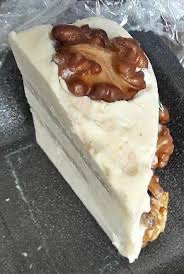













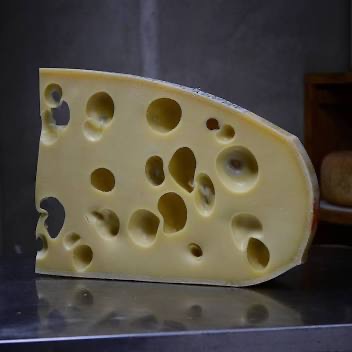

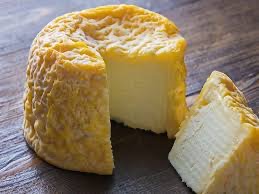

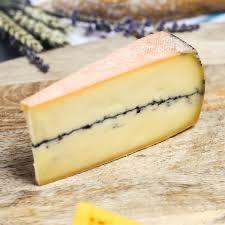


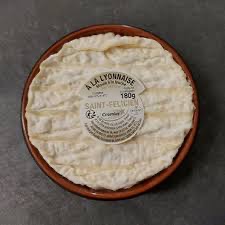
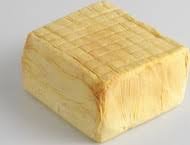


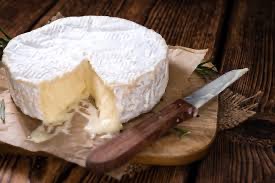






No comments:
Post a Comment